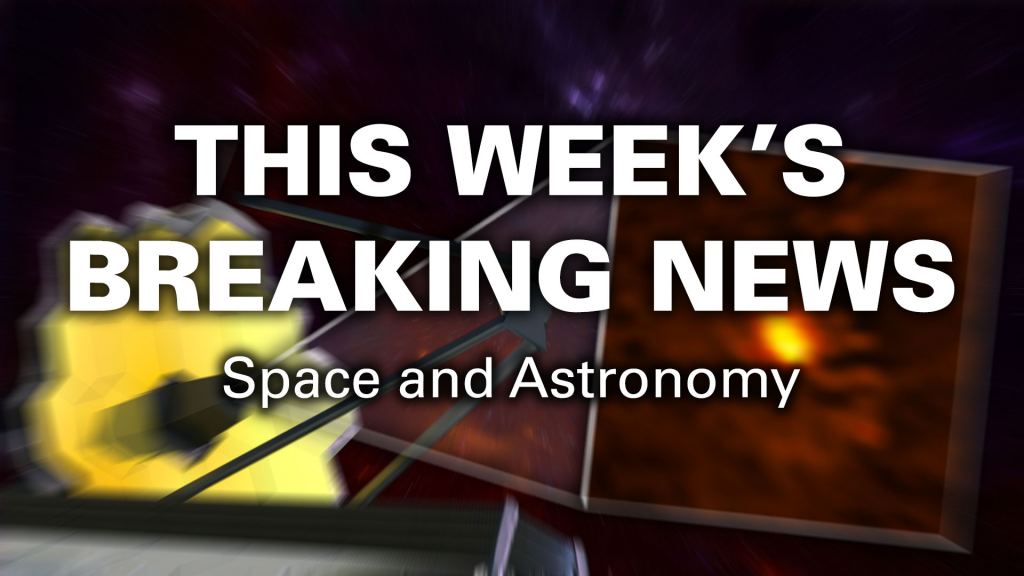Artemis 1 delayed yet again, a direct image of an exoplanet from Webb, how Starlink will connect directly to phones, Voyager 1 is fixed, and the Crisis in Cosmology continues. As always, if you want a TLDR version of this week’s most important space and astronomy news, here’s a video version of Space Bites. Finally! The James Webb Space Telescope has taken its first direct image of an exoplanet.
Previously, Webb had captured the spectra of exoplanet atmospheres, but this time, it’s an actual photo of a planet. The exoplanet is called HIP 65425 b, orbiting an A-type star about 355 light-years from Earth. It’s a gas giant with nine times the mass of Jupiter and orbits the star at a distance of 92 AU.
It’s not even remotely habitable, but an exciting first step that demonstrates how Webb can directly image exoplanets. Remove All Ads on Universe Today Join our Patreon for as little as $3! Get the ad-free experience for life More information about JWST’s exoplanet . SLS was supposed to launch on August 29th, but a sensor problem on one of its engines forced NASA to abort the countdown.
Their new launch date is scheduled for September 3rd, but they could push the launch back to September 5th if necessary. After that, the Moon is no longer close enough to reach this month, and the rocket will need to wait until October before it can try again. Because it’s operating on battery power, the rocket must be taken back to the Vehicle Assembly Building and plugged in.
More about SLS scrub . With the data from TESS telescope astronomers were able to identify a planet called TOI-1452b that is supposedly fully covered with water. And because the planet is in the habitable zone of its star, it’s not just water ice, like we see on Europa on Enceladus, but actual liquid water.
In a way, it may resemble the Miller planet from Interstellar, but with much deeper water levels. More about the ocean exoplanet . Here in the Solar System, the habitable zone starts at the orbit of Venus and extends out to the orbit of Mars.
Anywhere within that region, liquid water can be present on the surface of a planet. Earth is tucked in nicely in the middle of that zone. Astronomers have found a world with four times the mass of Earth that orbits in and out of the habitable zone around a red dwarf star.
Sometimes it could have liquid water on its surface, and other times it wouldn’t More about habitable zone weirdness . A few months ago, NASA engineers discovered that Voyager 1 was sending home bizarre and garbled telemetry data. After troubleshooting the problem, they realized that the spacecraft was routing its data through a malfunctioning computer that they believed was offline.
They fixed the bug and sent the spacecraft updated software; now, it’s communicating back to Earth properly. More about fixing Voyager 1 . This week SpaceX and T-Mobile did an announcement that soon Starlink will be able to connect directly to phones.
However, don’t get your hopes too high. It will require Starlink V2 satellites. They are much bigger and will only be able to launch on Starship.
Also, the connection speed will be low, enough to provide SMS and possible phone call capability but not high bandwidth internet. A big step forward anyway. More about direct Starlink to phone connection .
Astronomers are wrestling with a challenge to cosmology. Various methods for measuring the Universe’s expansion rate generate different values. And the error bars for these values don’t overlap.
Why? One possibility is that the strength of gravity has changed slightly over the age of the Universe. A new study examined millions of galaxies to see how they were distorted by dark matter gravitational lenses and found that these distortions remained constant over billions of years. This means that the force of gravity has remained constant.
More about gravity throughout history . If you want to get a curated selection of the most important space and astronomy news every week, subscribe to our Weekly Email Newsletter and get magazine-size ad-free news directly from Fraser Cain. If you prefer the news to be videoed at you, check out our Space Bites playlist on our YouTube channel .
.

